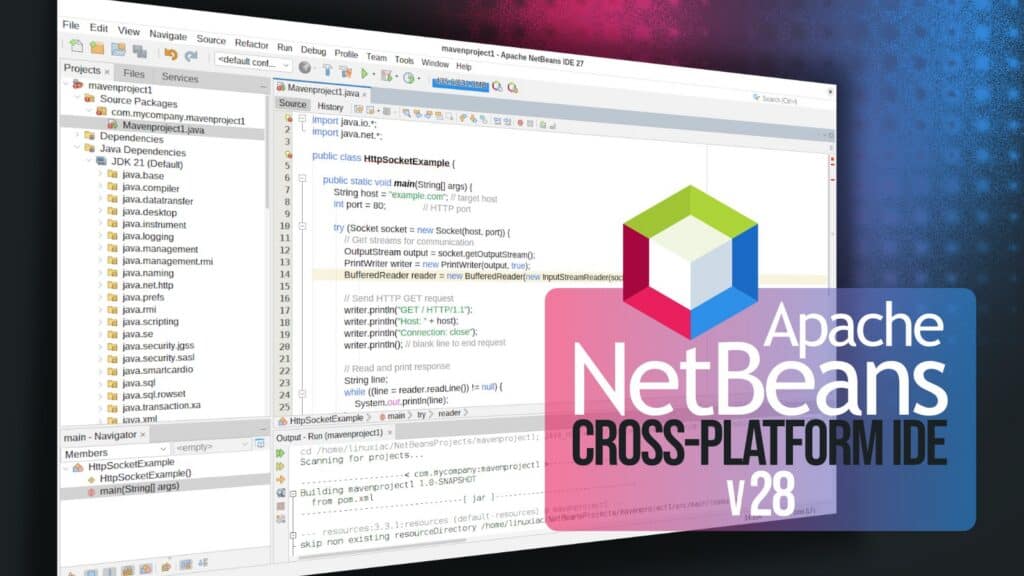The Apache NetBeans team has released version 28 for this popular, cross-platform IDE, delivering updates across Gradle, Maven, Java tooling, and the overall development experience.
This update brings full compatibility with Gradle 9, resolving multiple long-standing issues related to project dependency resolution and file collection handling. NetBeans 28 also upgrades the bundled Gradle tooling to version 8.11.1 and now defaults to JDK 25.
On the Maven side, the IDE now features improved goal re-run handling, a new “copy” button in the Maven action customizer, and refined dependency hinting that checks for both regular dependencies and build extensions.
Additionally, the embedded Maven plugins have been updated, including the exec-maven-plugin (now at version 3.5.1), while the DAP/LSP servers have been optimized to coordinate project readiness more effectively in complex setups.
The Java module receives considerable attention in this release. NetBeans 28 reduces reliance on internal javac APIs, enhances code completion, improves syntax highlighting for dark themes, and adds Javadoc syntax highlighting for code snippets. Developers working with preview features or modular projects will notice more robust import handling and better error recovery when dealing with incomplete syntax trees.
Additionally, the Language Server Protocol integration now supports multiple servers and introduces proper shutdown and exit handling.
Regarding the UI improvements, several interface refinements make the IDE more responsive and user-friendly. The Projects, Files, and Favorites tabs now include tooltips, while a new markdown file template and CheckRegex tool have been added to streamline text-based development tasks.
The FlatLaf theme has been upgraded to version 3.6.2, enhancing clarity in both light and dark modes. Additionally, the Form Designer now utilizes lambda listeners by default.
On top of that, a small but useful addition is a built-in text tool widget that can encode or decode Base64, URL, and Hex strings—handy for developers dealing with web or data serialization tasks.
Beyond Java, the release also enhances PHP autocompletion (especially for the use keyword and fully qualified class names), expands Groovy file extension support, and introduces SCSS readability improvements for dark themes. On the enterprise front, Java SE 26 support lands for Tomcat, TomEE, and GlassFish, with new integration for GlassFish 8.0.0-M12 and Faces 4 EL implicit objects.
Meanwhile, the core platform has gained smarter handling of the JAVA_HOME variable and reduced unnecessary log noise, thereby simplifying configuration and diagnostics across different environments.
Lastly, several internal components have been modernized, including updates to ASM 9.9 and CI improvements that expand automated testing coverage. The NetBeans team has also removed the built-in VS Code extension from the main repository—this project now lives independently under netbeans-vscode.
For more information, see the changelog. Apache NetBeans 28 is available for download from the project’s website.
